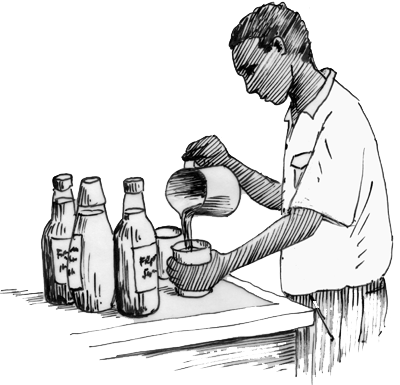- Another way of preventing fruit from being wasted is to make it into juice. Again, good hygiene is very important.
- Citrus fruits are very good and easy to make into juice. Other good sources are passion fruit, pomegranates and baobab fruit.
- In order to preserve fruit juice, a preservative is essential unless the juice is to be used immediately or frozen to sell in the market as a fruit ice.
Discussion
- Do local people use any kind of fruit juice at present? How is it made and preserved? What kind of interest and demand might there be for such juice?
- Without preservative, fruit juices must be used within a few days. Even with preservative, they will only keep for a few weeks before fermenting.
- How could fruit juices be marketed locally? Can juices be made into frozen sticks and sold in the market for example?
- Suggest all participants try making some kind of juice, taking careful notes of what quantities of fruit, sugar and preservative they use and how they extracted the juice. Set aside a time to sample each others’ produce and compare them.
Recipe
To make juice from citrus fruit: cut the fruit into half and squeeze by hand or with a press. Bring the juice nearly to the boil (90º C) but do not boil. Cool quickly and add preservative (potassium metabisulphite) – 1 /2 flat teaspoon or soda bottle top for every 10 lemons/16 limes. While still hot, pour into clean bottles (wrap in damp cloth to prevent cracking) and put on clean caps. Add sugar and dilute with plenty of water to drink. Try other fruits to make juices.
A sweet fruit juice can be made using sugar. Peel off a thin layer of the skin (without the bitter white pith) from 5–6 citrus fruits. Bring this to the boil for 3–4 minutes in one litre of water. Do not boil for longer or the flavour changes. Remove from heat and stir in one kilo of sugar, all the juice from the fruits and add 1 /2 teaspoon of preservative and 2 teaspoons of citric acid (usually obtained in chemists). Cool, strain and bottle. Dilute with clean water.
- If it can be obtained, a small quantity of citric acid gives a sharp, tangy flavour to less sharp fruit juices – such as orange or mango.








